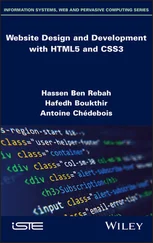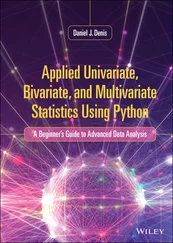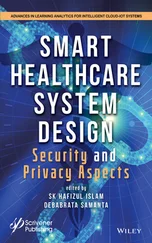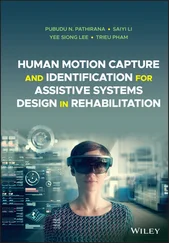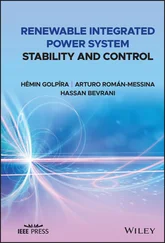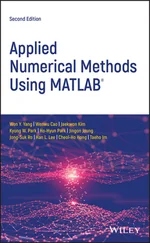1 Cover
2 Preface
3 Acknowledgment
4 List of Symbols and Acronyms
5 About the Companion Website
6 1 Basics of PID Control1.1 Introduction 1.2 PID Controller Structure 1.3 Classical Tuning Rules for PID Controllers 1.4 Model Based PID Controller Tuning Rules 1.5 Examples for Evaluations of the Tuning Rules 1.6 Summary 1.7 Further Reading Problems Notes
7 2 Closed-loop Performance and Stability2.1 Introduction 2.2 Routh–Hurwitz Stability Criterion 2.3 Nyquist Stability Criterion 2.4 Control System Structures and Sensitivity Functions 2.5 Reference Following and Disturbance Rejection 2.6 Disturbance Rejection and Noise Attenuation 2.7 Robust Stability and Robust Performance 2.8 Summary 2.9 Further Reading Problems
8 3 Model-Based PID and Resonant Controller Design3.1 Introduction 3.2 PI Controller Design 3.3 Model Based Design for PID Controllers 3.4 Resonant Controller Design 3.5 Feedforward Control 3.6 Summary 3.7 Further Reading Problems Notes
9 4 Implementation of PID Controllers4.1 Introduction 4.2 Scenario of a PID Controller at work 4.3 PID Controller Implementation using the Position Form 4.4 PID Controller Implementation using the Velocity Form 4.5 Anti-windup Implementation using the Position Form 4.6 Anti-windup Mechanisms in the Velocity Form 4.7 Tutorial on PID Anti-windup Implementation 4.8 Dealing with Other Implementation Issues 4.9 Summary 4.10 Further Reading Problems
10 5 Disturbance Observer- Based PID and Resonant Controller5.1 Introduction 5.2 Disturbance observer-Based PI Controller 5.3 Disturbance observer-Based PID Controller 5.4 Disturbance observer-Based Resonant Controller 5.5 Multi-frequency Resonant Controller 5.6 Summary 5.7 Further Reading Problems
11 6 PID Control of Nonlinear Systems6.1 Introduction 6.2 Linearization of the Nonlinear Model 6.3 Case Study: Ball and Plate Balancing System 6.4 Gain Scheduled PID Control Systems 6.5 Summary 6.6 Further Reading Problems
12 7 Cascade PID Control Systems7.1 Introduction 7.2 Design of a Cascade PID Control System 7.3 Cascade Control System for Input Disturbance Rejection 7.4 Cascade Control System for Actuator Nonlinearities 7.5 Summary 7.6 Further Reading Problems
13 8 PID Controller Design for Complex Systems8.1 Introduction 8.2 PI Controller Design via Gain and Phase Margins 8.3 PID Controller Design using Two Frequency Points 8.4 PID Controller Design for Integrating Systems 8.5 Summary 8.6 Further Reading Problems
14 9 Automatic Tuning of PID Controllers9.1 Introduction 9.2 Relay Feedback Control 9.3 Estimation of Frequency Response using the Fast Fourier Transform (FFT) 9.4 Estimation of Frequency Response Using the frequency sampling filter (FSF) 9.5 Monte-Carlo Simulation Studies 9.6 Auto-tuner Design for Stable Plant 9.7 Auto-tuner Design for a Plant with an Integrator 9.8 Summary 9.9 Further Reading Problems Note
15 10 PID Control of Multi-rotor Unmanned Aerial Vehicles10.1 Introduction 10.2 Multi-rotor Dynamics 10.3 Cascade Attitude Control of Multi-rotor UAVs 10.4 Automatic Tuning of Attitude Control Systems 10.5 Summary 10.6 Further Reading Problems
16 Suggestions to Food for Thought Questions
17 Bibliography
18 Index
19 End User License Agreement
1 Chapter 1 Table 1.1 Ziegler–Nichols tuning rule using oscillation testing data. Table 1.2 Ziegler-Nichols tuning rules with a reaction curve. Table 1.3 Cohen–Coon tuning rules with a reaction curve. Table 1.4 Padula and Visioli tuning rules (PI controller). Table 1.5 Padula and Visioli tuning rules (PID controller). Table 1.6 Wang–Cluett tuning rules with reaction curve (  ). Table 1.7 PI controller parameters with reaction curve. Table 1.8 PI controller parameters with reaction curve. Table 1.9 PI controller parameters with reaction curve.
). Table 1.7 PI controller parameters with reaction curve. Table 1.8 PI controller parameters with reaction curve. Table 1.9 PI controller parameters with reaction curve.
2 Chapter 2 Table 2.1 Routh–Hurwitz table. Table 2.2 Routh–Hurwitz table for the third order system. Table 2.3 Modified PI controller parameters with gain margin, phase margin, a...
3 Chapter 8Table 8.1 Normalized PID controller parameters (  ,
,  ). Table 8.2 Normalized PID controller parameters (
). Table 8.2 Normalized PID controller parameters (  ,
,  ).
).
4 Chapter 9Table 9.1 PID controller parameters for different  values. Table 9.2 PID controller parameters and mean squared errors from the control ...
values. Table 9.2 PID controller parameters and mean squared errors from the control ...
5 Chapter 10Table 10.1 Quadrotor hardware list.Table 10.2 Quadrotor parameters.Table 10.3 Flight controller and avionic components.Table 10.4 Physical specifications of the hexacopter.
1 Chapter 1 Figure 1.1 Proportional feedback control system. Figure 1.2 Closed-loop step response of a proportional control system (Examp... Figure 1.3 Proportional plus derivative feedback control system (  ). Figure 1.4 PD controller structure in implementation. Figure 1.5 PI control system. Figure 1.6 Closed-loop step response of a PI control system (Example 1.2). Figure 1.7 IP controller structure. Figure 1.8 Closed-loop step response of PI control system (Example 1.3). Key... Figure 1.9 PID controller structure. Figure 1.10 IPD controller structure. Figure 1.11 Step responses of PID control system (Example 1.4). (a) Response... Figure 1.12 Sustained closed-loop oscillation (control signal). Figure 1.13 Comparison of closed-loop output response using Ziegler–Nichols ... Figure 1.14 Step response data. (a) Input signal. (b) Output signal. Key: li... Figure 1.15 Unit step response (Example 1.6) Figure 1.16 Closed-loop unit step response with PI controller (Example 1.6).... Figure 1.17 Unit step response (Example 1.7). Figure 1.18 Closed-loop unit step response with PI controller (Example 1.7).... Figure 1.19 Comparison of closed-loop responses using Padula and Visioli PI ... Figure 1.20 Comparison of closed-loop responses using Padula and Visioli PID... Figure 1.21 Unit step response of the fired heater process. Figure 1.22 Comparison of closed-loop responses using Ziegler–Nichols and Wa...
). Figure 1.4 PD controller structure in implementation. Figure 1.5 PI control system. Figure 1.6 Closed-loop step response of a PI control system (Example 1.2). Figure 1.7 IP controller structure. Figure 1.8 Closed-loop step response of PI control system (Example 1.3). Key... Figure 1.9 PID controller structure. Figure 1.10 IPD controller structure. Figure 1.11 Step responses of PID control system (Example 1.4). (a) Response... Figure 1.12 Sustained closed-loop oscillation (control signal). Figure 1.13 Comparison of closed-loop output response using Ziegler–Nichols ... Figure 1.14 Step response data. (a) Input signal. (b) Output signal. Key: li... Figure 1.15 Unit step response (Example 1.6) Figure 1.16 Closed-loop unit step response with PI controller (Example 1.6).... Figure 1.17 Unit step response (Example 1.7). Figure 1.18 Closed-loop unit step response with PI controller (Example 1.7).... Figure 1.19 Comparison of closed-loop responses using Padula and Visioli PI ... Figure 1.20 Comparison of closed-loop responses using Padula and Visioli PID... Figure 1.21 Unit step response of the fired heater process. Figure 1.22 Comparison of closed-loop responses using Ziegler–Nichols and Wa...
2 Chapter 2 Figure 2.1 Closed-loop control system in transfer function form. Figure 2.2 Nyquist plot with a unit circle for illustration of gain margin a... Figure 2.3 Magnitude of  (solid line) together with dashed line to determin... Figure 2.4 Nyquist plots with a unit circle (Example 2.3). Key: line (1)
(solid line) together with dashed line to determin... Figure 2.4 Nyquist plots with a unit circle (Example 2.3). Key: line (1) 
Читать дальше
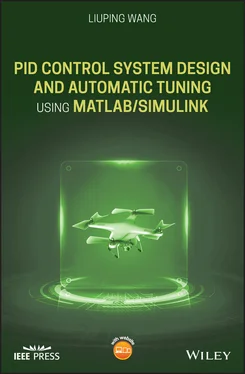
 ). Table 1.7 PI controller parameters with reaction curve. Table 1.8 PI controller parameters with reaction curve. Table 1.9 PI controller parameters with reaction curve.
). Table 1.7 PI controller parameters with reaction curve. Table 1.8 PI controller parameters with reaction curve. Table 1.9 PI controller parameters with reaction curve. ,
,  ). Table 8.2 Normalized PID controller parameters (
). Table 8.2 Normalized PID controller parameters (  ,
,  ).
). values. Table 9.2 PID controller parameters and mean squared errors from the control ...
values. Table 9.2 PID controller parameters and mean squared errors from the control ... ). Figure 1.4 PD controller structure in implementation. Figure 1.5 PI control system. Figure 1.6 Closed-loop step response of a PI control system (Example 1.2). Figure 1.7 IP controller structure. Figure 1.8 Closed-loop step response of PI control system (Example 1.3). Key... Figure 1.9 PID controller structure. Figure 1.10 IPD controller structure. Figure 1.11 Step responses of PID control system (Example 1.4). (a) Response... Figure 1.12 Sustained closed-loop oscillation (control signal). Figure 1.13 Comparison of closed-loop output response using Ziegler–Nichols ... Figure 1.14 Step response data. (a) Input signal. (b) Output signal. Key: li... Figure 1.15 Unit step response (Example 1.6) Figure 1.16 Closed-loop unit step response with PI controller (Example 1.6).... Figure 1.17 Unit step response (Example 1.7). Figure 1.18 Closed-loop unit step response with PI controller (Example 1.7).... Figure 1.19 Comparison of closed-loop responses using Padula and Visioli PI ... Figure 1.20 Comparison of closed-loop responses using Padula and Visioli PID... Figure 1.21 Unit step response of the fired heater process. Figure 1.22 Comparison of closed-loop responses using Ziegler–Nichols and Wa...
). Figure 1.4 PD controller structure in implementation. Figure 1.5 PI control system. Figure 1.6 Closed-loop step response of a PI control system (Example 1.2). Figure 1.7 IP controller structure. Figure 1.8 Closed-loop step response of PI control system (Example 1.3). Key... Figure 1.9 PID controller structure. Figure 1.10 IPD controller structure. Figure 1.11 Step responses of PID control system (Example 1.4). (a) Response... Figure 1.12 Sustained closed-loop oscillation (control signal). Figure 1.13 Comparison of closed-loop output response using Ziegler–Nichols ... Figure 1.14 Step response data. (a) Input signal. (b) Output signal. Key: li... Figure 1.15 Unit step response (Example 1.6) Figure 1.16 Closed-loop unit step response with PI controller (Example 1.6).... Figure 1.17 Unit step response (Example 1.7). Figure 1.18 Closed-loop unit step response with PI controller (Example 1.7).... Figure 1.19 Comparison of closed-loop responses using Padula and Visioli PI ... Figure 1.20 Comparison of closed-loop responses using Padula and Visioli PID... Figure 1.21 Unit step response of the fired heater process. Figure 1.22 Comparison of closed-loop responses using Ziegler–Nichols and Wa... (solid line) together with dashed line to determin... Figure 2.4 Nyquist plots with a unit circle (Example 2.3). Key: line (1)
(solid line) together with dashed line to determin... Figure 2.4 Nyquist plots with a unit circle (Example 2.3). Key: line (1) 

